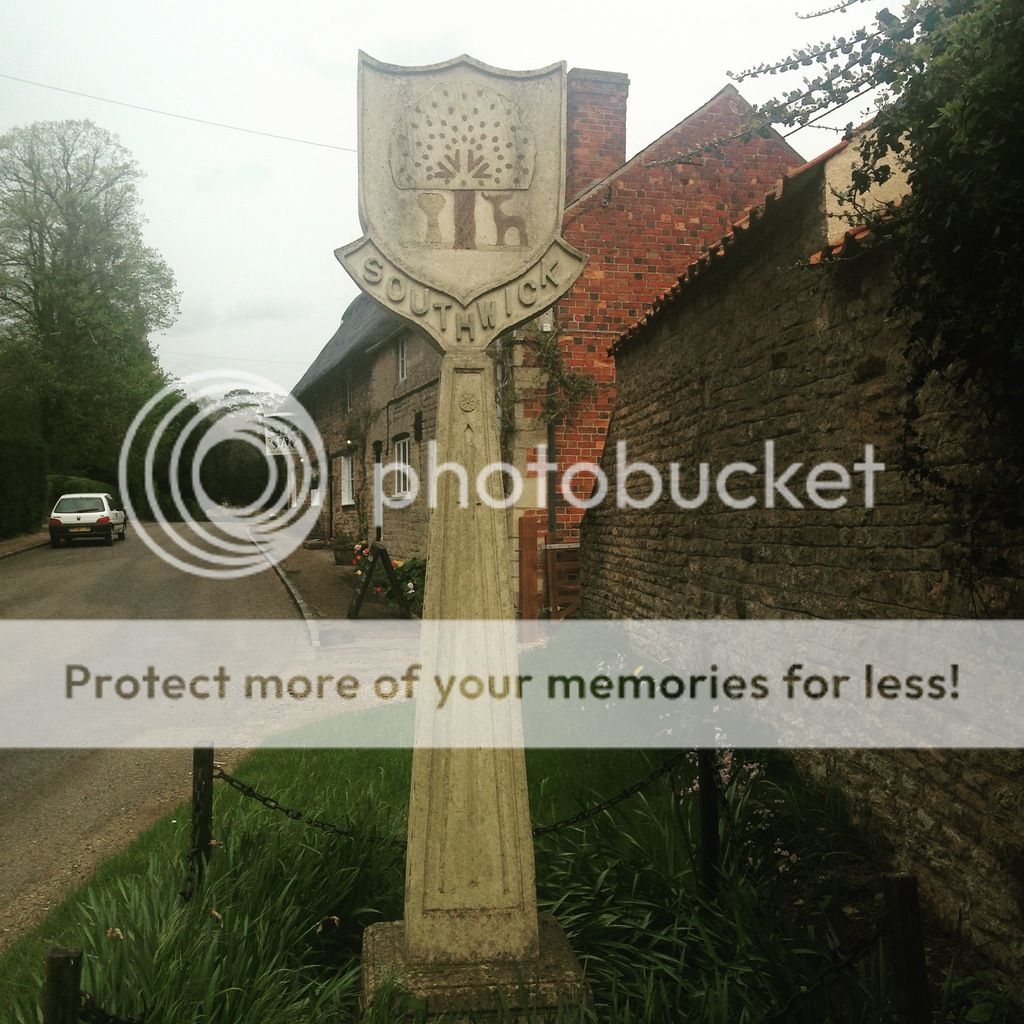 Southwick (pronounced "Suth-ick") is a small village and civil parish in Northamptonshire, England. It is approximately 3 miles (4.8 km) north of the town of Oundle and is set in a valley of the river Nene. The village falls within the Non-Metropolitan District of East Northamptonshire, which itself lies within the East Midlands region. At the time of the 2001 census, the parish's population was 180 people.
Southwick (pronounced "Suth-ick") is a small village and civil parish in Northamptonshire, England. It is approximately 3 miles (4.8 km) north of the town of Oundle and is set in a valley of the river Nene. The village falls within the Non-Metropolitan District of East Northamptonshire, which itself lies within the East Midlands region. At the time of the 2001 census, the parish's population was 180 people.
The manor of Southwick, and Southwick Hall[]
The first mention of a Knyvett at Southwick is in 1194.[3] The Knyvetts were in the village for at least a century before they built the present house. Richard Knyvett, a prominent wool merchant, was the keeper of the forest of Clive (or Cliffe) which is now part ofRockingham Forest, from 1324. The family built the medieval manor house which was then known as Knyvett's Place but is now known as Southwick Hall. Dating from this period are two towers, one at the front of the house and the other in the courtyard at the rear.
Richard Knyvett's son, Sir John Knyvet, was Chief Justice of the King's Bench and Lord Chancellor between 1372 and 1377. Another family member was the Member of Parliament for Huntingdonshire and another was the Sheriff of Northamptonshire who was taken prisoner whilst fighting in the Hundred Years' War: a ransom of a thousand pounds was demanded for his release.
The Knyvetts allowed Southwick to pass to the Lynn family after inheriting a better seat for themselves at Buckenham Castle inNorfolk. The first Lynn at Southwick was John Lynn, who married Joan Knyvett, who was herself the great-great-great-great-great-granddaughter of the John Knyvet established there in 1194.
The Lynn family held the manor of Southwick from 1442 until 1840, and it was during their tenure that most of Southwick Hall was built, although the oldest parts date from the 14th century. The family ended in an heiress, Martha Lynn, who married but died childless in 1796. Her heirs were the Johnson family, who took the name and arms of Lynn but sold Southwick to the Capron family in 1840.
The Caprons were already lords of the nearby manor of Stoke Doyle, and the first Capron lord of the manor of Southwick, George Capron (1783-1872), had made a fortune as a lawyer at the time of the railway boom of the early 19th century, in which he acted for railway companies in acquisitions of land.
A connection is traced between the three families which have owned the manor of Southwick from the 12th to the 21st centuries: Knyvett, Lynn and Capron. One of George Capron's great-uncles was John Shuckburgh, or Shukburgh. His mother, Judith Thynne, was descended through the Thynnes of Longleat (now Marquesses of Bath) from the Lynn family. John Shukburgh's only son, Rev. John Shukburgh, left George Capron the residue of his estate when he died unmarried in 1818. George's uncle John was a co-heir, but in 1839 he also died unmarried, leaving the Caprons as sole heirs in residue. It was in the following year that the Caprons acquired the manor of Southwick.
If you would like to add to the VS(village sign) series, please first contact the SmokeyPugs, for a number,to avoid duplication.